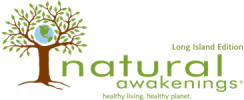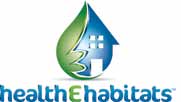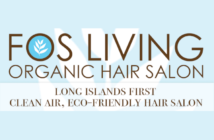 We are exposed to many toxic chemicals, both naturally and manmade. We inhale them in the air we breathe, swallow them in the contaminated water we drink, and absorb them through the skin while bathing. Various chemicals can be found on the surfaces within our homes due to house-hold cleaners or from manufactured products. It’s important for us, now more than ever, to understand our exposure and take action to become more preventative with our health and especially the health of our children.
We are exposed to many toxic chemicals, both naturally and manmade. We inhale them in the air we breathe, swallow them in the contaminated water we drink, and absorb them through the skin while bathing. Various chemicals can be found on the surfaces within our homes due to house-hold cleaners or from manufactured products. It’s important for us, now more than ever, to understand our exposure and take action to become more preventative with our health and especially the health of our children.
What is “body burden”?
The term “body burden” refers to the total amount of chemicals that are present in our bodies at a given point in time. Scientists estimate that everyone carries within his or her body at least 700 contaminants, most of which have not been well studied. Sadly, a study by the Environmental Working Group found an average of 200 industrial compounds, pollutants and other chemicals in the umbilical cord blood of newborn babies!
What are the health effects of these chemicals?
Chemicals can have different effects on us, depending upon concentration, timing, duration and pattern of exposure, as well as the properties of the specific chemical.
Chemicals that cause cancer are called carcinogens. Chemicals that cause birth defects are called teratogens. Chemicals that damage the normal development of the fetus, infant or child, or damage our reproductive tissues, are called developmental/reproductive toxicants. Some chemicals can cause damage through their ability to interfere with normal hormonal function. These chemicals are called endocrine disrupters. Toxic chemicals can cause a long list of health problems. The most common include:
- Cancer
- High blood pressure
- Asthma
- Attention deficits
- Memory loss
- Lower IQ and other learning disabilities n Parkinson’s-like diseases
- Infertility
- Shortened lactation
- Endometriosis
- Genital malformation
- Peripheral nerve damage
- Dysfunctional immune systems
Are there special health effects for children?
Developing tissues are far more susceptible to chemical exposures than adult tissues. Development
is a time of special vulnerability. This means that the developing fetus, infant or child may suffer harmful impacts from relatively small exposures that have no measurable impacts on adults. So, it’s important to understand there is no safe level of exposure to toxins. Chemicals are used in consumer products and released into the environment before they are tested. “By allowing our children to be exposed, we are unwittingly using our children as part of a massive experiment,” says ToomasNiemann, CEO of Long Island-based healthEhabitats, who also has a degree in environmental science and systems engineering from the United States Military Academy at West Point.
It doesn’t have to be this way. healthEhabitats provides simple solutions, products and services to help reduce your child’s exposure, and will help manage your body burden.
Ways to avoid exposure to toxins:
1. Get your home checked for chemical hazards.
2. Have your water tested.
3. Don’t use pesticides in and around your home.
4. Dust floors and clean surfaces frequently to reduce exposure to lead and flame retardants
5. Ensure adequate ventilation in home, specifically in bedrooms or where you spend most of your time indoors.
6. Consider the right air purifier or filtration system.
7. Dependent upon the age of your house, test your home for lead.
Call 877-861-3662 to schedule a healthEhome evaluation to test your home’s air, water and surface quality. See ad on page 11.





